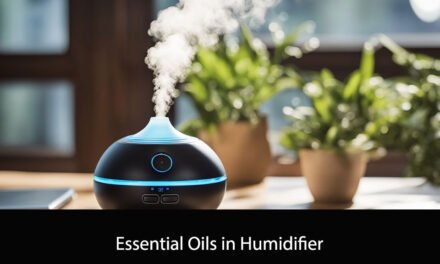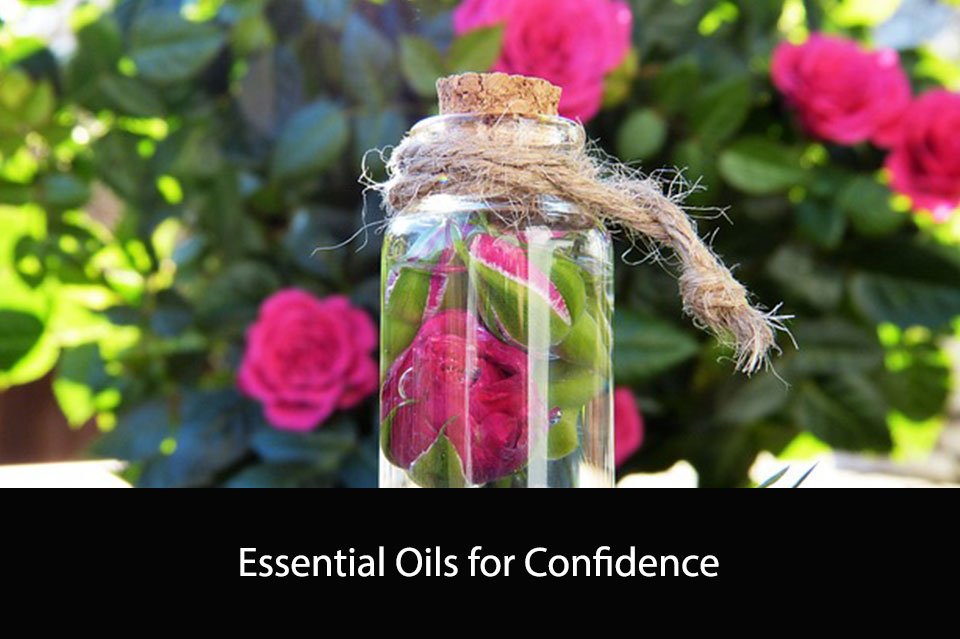Essential oils have been used for centuries for their therapeutic properties. They are extracted from various parts of plants, including flowers, leaves, and roots. Essential oils are known for their ability to balance the body’s pH levels, which is crucial for maintaining overall health. In this article, we will explore the benefits of essential oils for pH balance and how they can be used to improve your well-being.

Maintaining a balanced pH level is essential for the body to function correctly. A pH level that is too acidic or too alkaline can lead to various health problems, including digestive issues, skin problems, and even chronic diseases. Essential oils can help balance the body’s pH levels by promoting the elimination of toxins and supporting the body’s natural healing processes. They can also help reduce inflammation and boost the immune system, which can further improve overall health.
In the following paragraphs, we will delve deeper into the benefits of essential oils for pH balance and explore some of the most effective oils for maintaining a healthy pH level. Whether you are looking to improve your digestive health, support your immune system, or simply promote overall well-being, essential oils can be a valuable addition to your daily routine.
Understanding pH Balance and Essential Oils

Maintaining a healthy pH balance is essential for our overall health and well-being. pH balance refers to the balance of acid and alkaline in our body. The pH scale ranges from 0 to 14, with 7 being neutral. A pH below 7 is considered acidic, and above 7 is considered alkaline.
Essential oils can be a useful tool in maintaining a healthy pH balance. Some essential oils have an alkalizing effect on the body, which can help to balance out excess acidity. Other essential oils have a more acidic effect, which can be useful in balancing out excess alkalinity.
Here are some essential oils that can help to balance pH levels:
- Lavender: This essential oil has a calming effect and can help to balance pH levels by reducing stress and anxiety.
- Lemon: Lemon essential oil has an alkalizing effect on the body and can help to balance out excess acidity.
- Peppermint: Peppermint essential oil has an alkalizing effect and can help to reduce excess acidity in the body.
- Tea Tree: Tea Tree essential oil has an acidic effect and can be useful in balancing out excess alkalinity.
It’s important to note that essential oils should never be used as a substitute for medical treatment. If you are experiencing symptoms of an imbalance in pH levels, it’s important to consult with a healthcare professional.
In conclusion, essential oils can be a helpful tool in maintaining a healthy pH balance. By incorporating essential oils into your routine, you can support your body’s natural ability to balance pH levels and promote overall health and well-being.
Top Essential Oils for pH Balance

Maintaining a healthy pH balance in our body is essential for overall well-being. Essential oils can help us achieve this balance naturally. Here are some of the top essential oils for pH balance:
Lavender Oil
Lavender oil has a soothing and calming effect on the body and mind. It also has antiseptic and anti-inflammatory properties that help maintain a healthy pH balance. You can add a few drops of lavender oil to your bath water or mix it with a carrier oil and apply it to your skin.
Tea Tree Oil
Tea tree oil is known for its antimicrobial and antifungal properties. It can help balance the pH level of our skin and scalp. You can add a few drops of tea tree oil to your shampoo or mix it with a carrier oil and apply it to your skin.
Lemon Oil
Lemon oil is a natural astringent that helps balance the pH level of our skin. It also has antiseptic and antibacterial properties that help fight off infections. You can add a few drops of lemon oil to your facial toner or mix it with a carrier oil and apply it to your skin.
Using essential oils for pH balance is a natural and effective way to maintain a healthy body. Remember to always dilute essential oils with a carrier oil before applying them to your skin and consult with a healthcare professional before using them internally.
Application Methods for Essential Oils

Essential oils can be used in a variety of ways to help balance pH levels in the body. Here are three common methods for using essential oils:
Topical Application
Topical application of essential oils involves applying the oil directly to the skin. This method is particularly effective for targeting specific areas of the body. To use essential oils topically, mix a few drops of the oil with a carrier oil, such as coconut or jojoba oil, and apply to the desired area. Be sure to do a patch test before applying the oil to a larger area of skin.
Aromatherapy
Aromatherapy involves inhaling the scent of essential oils. This method is often used to promote relaxation and reduce stress. To use essential oils for aromatherapy, add a few drops of the oil to a diffuser or humidifier. Alternatively, you can add a few drops of the oil to a bowl of hot water and inhale the steam.
Ingestion
Ingesting essential oils involves adding the oil to food or drink. This method should only be used with caution, as some essential oils can be toxic when ingested. Before ingesting an essential oil, be sure to research its safety and consult with a healthcare professional. To use essential oils for ingestion, add a drop or two to a glass of water or a teaspoon of honey.
Overall, essential oils can be a helpful tool for balancing pH levels in the body. By using these methods of application, we can harness the power of essential oils to promote overall health and wellness.
Safety and Precautions
When using essential oils for pH balance, it is important to take certain safety measures to avoid any adverse reactions. Here are some guidelines to follow:
Dilution Guidelines
Essential oils are highly concentrated and should be diluted before use. We recommend diluting them with a carrier oil, such as coconut or jojoba oil. The general rule of thumb is to use 1-2 drops of essential oil per teaspoon of carrier oil. However, some oils are more potent than others, so be sure to check the dilution guidelines for each oil before use.
Skin Patch Test
Before using any essential oil on your skin, it is important to do a patch test to check for any allergic reactions. To do this, dilute the essential oil as recommended and apply a small amount to the inside of your wrist or elbow. Wait 24 hours to see if any redness, itching, or swelling occurs. If there is no reaction, the oil is safe to use.
Consultation with Health Professionals
If you have any pre-existing medical conditions or are pregnant, it is important to consult with a health professional before using essential oils. Some oils can interact with medications or cause adverse reactions in certain individuals. It is always better to err on the side of caution and seek professional advice before using essential oils for pH balance.
By following these safety measures, you can enjoy the benefits of essential oils for pH balance without any negative side effects.
Integrating Essential Oils into Your Routine
If you’re looking to improve your pH balance, incorporating essential oils into your daily routine can be a great way to help support your body’s natural processes. Here are some ways to integrate essential oils into your routine:
Daily Practices
One of the easiest ways to use essential oils is to diffuse them throughout your home or workspace. You can choose oils that are known for their pH balancing properties, such as lemon, grapefruit, or peppermint. Simply add a few drops to your diffuser and enjoy the benefits throughout the day.
Another way to use essential oils is to add them to your bath or shower. This can be especially beneficial if you’re dealing with skin issues related to pH balance. Try adding a few drops of lavender or tea tree oil to your bathwater or shower gel for a soothing and balancing experience.
Wellness Regimen
If you’re looking to take your essential oil use to the next level, consider incorporating them into your wellness regimen. This might include adding them to your skincare routine, using them in massage therapy, or even taking them internally (with the guidance of a healthcare professional).
When it comes to skincare, essential oils can be a great way to support a healthy pH balance. Look for oils that are known for their cleansing and balancing properties, such as tea tree, frankincense, or geranium. You can add a few drops to your moisturizer or use them in a DIY face mask.
Overall, integrating essential oils into your routine can be a simple and effective way to support your body’s natural pH balance. Just be sure to do your research and use them safely and responsibly.
Scientific Research on Essential Oils and pH Balance
We have found several scientific studies that suggest essential oils can help balance pH levels in the body. One study published in the Journal of Agricultural and Food Chemistry found that certain essential oils, including lemon, lime, and grapefruit, have an alkalizing effect on the body.
Another study published in the Journal of Medicinal Food found that essential oils from thyme and oregano had a significant impact on reducing acidity levels in the body. The study concluded that these essential oils could potentially be used as a natural remedy for acidosis.
In addition, a study published in the International Journal of Food Sciences and Nutrition found that essential oils from peppermint, spearmint, and ginger had a positive effect on pH levels in the stomach. The study suggested that these essential oils could be used to alleviate symptoms of acid reflux and other digestive issues.
Overall, while more research is needed to fully understand the effects of essential oils on pH balance, these studies suggest that certain essential oils may have a positive impact on maintaining a healthy pH level in the body.
Natural Alternatives to Essential Oils for pH Balance
While essential oils are a popular choice for balancing pH levels, there are also natural alternatives available. Here are some options:
1. Apple Cider Vinegar
Apple cider vinegar is a natural remedy that can help balance the pH levels in the body. It contains acetic acid which helps to maintain the pH balance of the skin. You can mix one part apple cider vinegar with three parts water and apply it to your skin using a cotton ball.
2. Baking Soda
Baking soda is another natural remedy that can help balance the pH levels in the body. It has alkaline properties that can neutralize the acidity in the body. You can mix one tablespoon of baking soda with one cup of water and apply it to your skin using a cotton ball.
3. Aloe Vera
Aloe vera is a natural plant that can help balance the pH levels in the body. It contains polysaccharides which can help to soothe and heal the skin. You can apply aloe vera gel directly to your skin or mix it with other natural ingredients like honey or coconut oil.
4. Lemon Juice
Lemon juice is a natural remedy that can help balance the pH levels in the body. It contains citric acid which can help to neutralize the acidity in the body. You can mix one tablespoon of lemon juice with one cup of water and apply it to your skin using a cotton ball.
These natural alternatives can be effective in balancing pH levels in the body. However, it is important to consult with a healthcare professional before trying any new remedies.
Frequently Asked Questions
What are the safest essential oils for maintaining feminine hygiene?
When it comes to feminine hygiene, it’s important to choose essential oils that are safe and gentle. Some of the best options include tea tree oil, lavender oil, and chamomile oil. These oils have natural antibacterial and antifungal properties that can help keep the vaginal area clean and healthy.
Which essential oils are effective for relieving vaginal dryness?
Vaginal dryness can be a frustrating and uncomfortable condition. Some essential oils that may help relieve dryness include geranium oil, clary sage oil, and ylang-ylang oil. These oils can help stimulate natural lubrication and promote a healthy moisture balance.
How should essential oils be applied for feminine hygiene purposes?
Essential oils should never be applied directly to the vaginal area. Instead, they should be diluted with a carrier oil, such as coconut oil or jojoba oil, before being applied topically. It’s also important to do a patch test before using any new essential oils to ensure that you don’t have an allergic reaction.
What essential oils can help alleviate vaginal itch?
Vaginal itching can be caused by a variety of factors, including yeast infections, bacterial vaginosis, and allergies. Some essential oils that may help alleviate itching include tea tree oil, peppermint oil, and eucalyptus oil. These oils have natural anti-inflammatory and antifungal properties that can help soothe irritation and reduce itching.
Are there specific essential oils that can combat vaginal odor?
Vaginal odor can be embarrassing and uncomfortable. Some essential oils that may help combat odor include tea tree oil, lemon oil, and grapefruit oil. These oils have natural antibacterial properties that can help eliminate odor-causing bacteria and promote a fresh, clean scent.
How do essential oils influence vaginal pH balance?
Essential oils can help balance vaginal pH by promoting a healthy bacterial balance. Some oils, such as tea tree oil and lavender oil, have natural antibacterial properties that can help eliminate harmful bacteria while promoting the growth of beneficial bacteria. This can help maintain a healthy pH balance and prevent infections and other issues.





